Web2 apps concentrate too much power in the hands of a single firm, which is one of the issues that Web3 alternative applications seek to address.
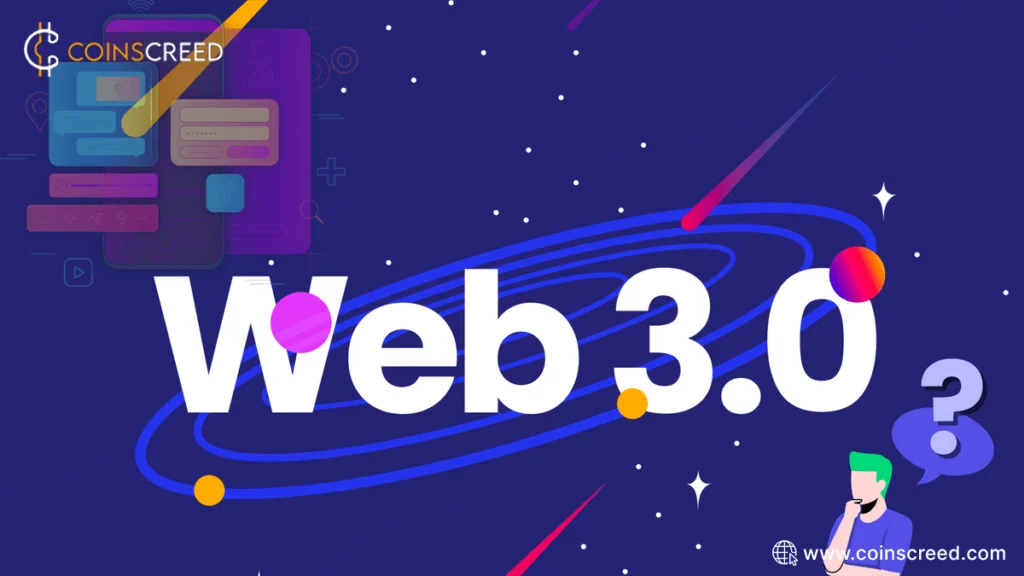
The web3 idea is gradually growing as a significant shift in how people see, perceive, and use the internet. Web 3.0 is essentially a new set of principles for constructing the core infrastructure for facilitating online services and transactions.
Web3 uses technology and principles such as AI, the semantic web, blockchain, and machine learning to create a new version of the internet. With web3, the new version of the internet can enable decentralized communication and interaction among users and applications. Consider the greatest web3 applications to be a unique spin on traditional applications with new value increases.
Top 15 Web3 applications and their Web2 equivalents
Web3 apps are used in a variety of industries, including cloud storage, social media, and blogging services, among others. This post will go through fifteen of the best web3 applications and their web2 counterparts.
- Entre vs. LinkedIn
- Diamond vs. Twitter
- Mirror.xyz vs. Medium
- Storj vs. Google Cloud Storage
- Odyssey vs. YouTube
- Brave browser vs Chrome browser
- Presearche vs. Google
- Braintrust vs. Upwork
- SOLA vs. Facebook
- Audius vs. Spotify
- ENS vs. GoDaddy
- Filecoin vs. AWS S3
- Secretum vs. WhatsApp
- Steemit vs. Reddit
- Ethlance vs. Fiverr
Entre vs. LinkedIn
Entre is a blockchain-based decentralized social media platform that lets users upload content, nurture possibilities, and receive money for their efforts. This social media platform which claims itself as a decentralized web3 LinkedIn competitor debuted on the DeSo blockchain.
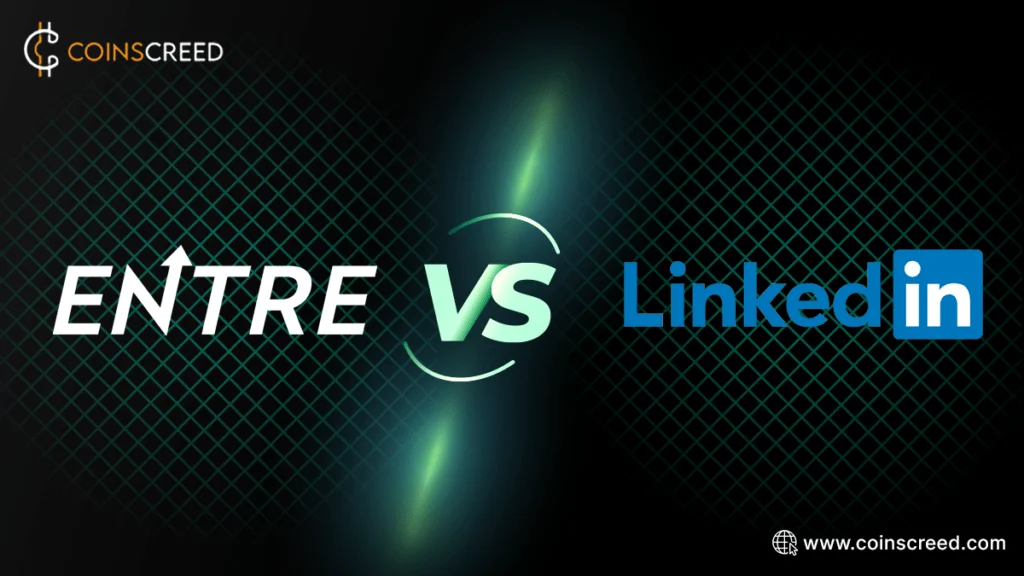
The app’s founder, Michael Marra, describes it as “a web3 professional network created to help people connect and work in the web3 environment.”
Whereas on LinkedIn, users can upload material with the objective of creating possibilities, Entre users can develop opportunities and make money straight now. With web3 roles in high demand from both big brands and start-ups, Entre believes it has created an environment where specialized talent can be discovered.
Entre, on the other hand, claims that their integrated marketplace makes it simple for job hunters to “find the next major web3 opportunity to boost their career.”
Furthermore, on decentralized social media, people are the sole owners of their material and viewership.
The Entre marketplace makes it simple to find the next big Web3 opportunity. Entrepreneurs can post jobs and gigs to hire inside the network. You can also become a partner and offer your deals to the site to reach a broader audience.
With Entre, you can quickly connect with other professionals, discover new possibilities, and even receive rewards for your engagement on the site.
Diamond vs. Twitter
Diamond is a DeSo blockchain-based decentralized Twitter alternative.
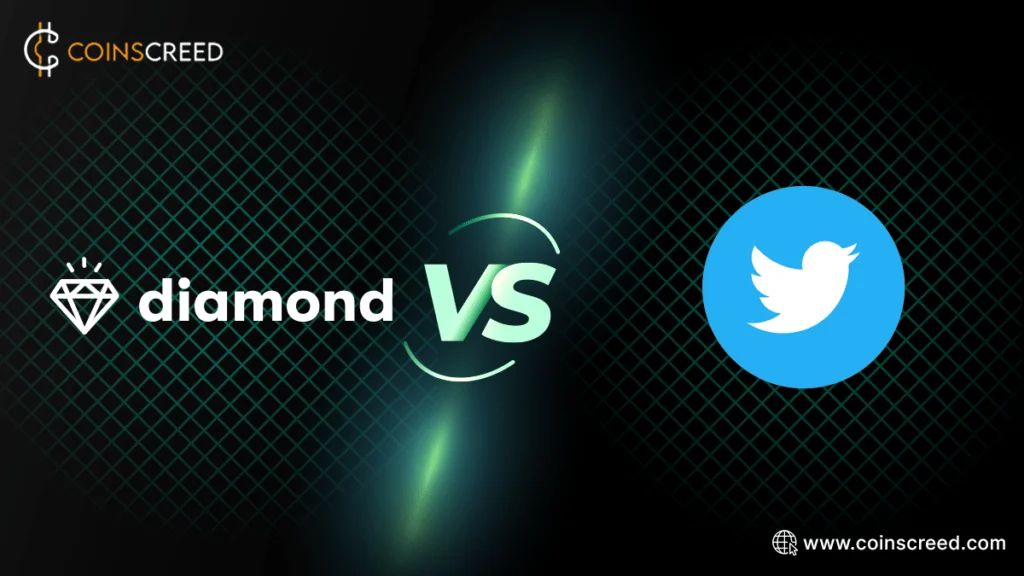
The app is the first decentralized blockchain platform to contain content and a social network. The program is also intended to be simpler to use than other blockchain-based networks, making creating an account for Diamond as simple as signing up for an app like Instagram.
By publishing content to the DeSo network, writers and producers may own and manage their content in the same manner that they own and control their Bitcoin. This implies they can be free of restriction and discover new ways to commercialize that were previously unimaginable.
Diamond offers a tipping system that allows you to give cryptocurrency tips to your favorite creators. These suggestions are actual diamonds with real value, as opposed to the WEB2 “like” button, which is practically worthless.
With Diamond, you can also mint NFTs with a single click. This makes it simple to produce and exchange digital treasures with your friends or followers. Furthermore, the NFTs you generate can be stored on the DeSo Blockchain, ensuring their safety and security.
Mirror.xyz vs. Medium
Mirror is a DAO that is constructed and run by its contributors. Mirror, like Medium, allows publishers to sell their work using bitcoin rather than traditional transfers.
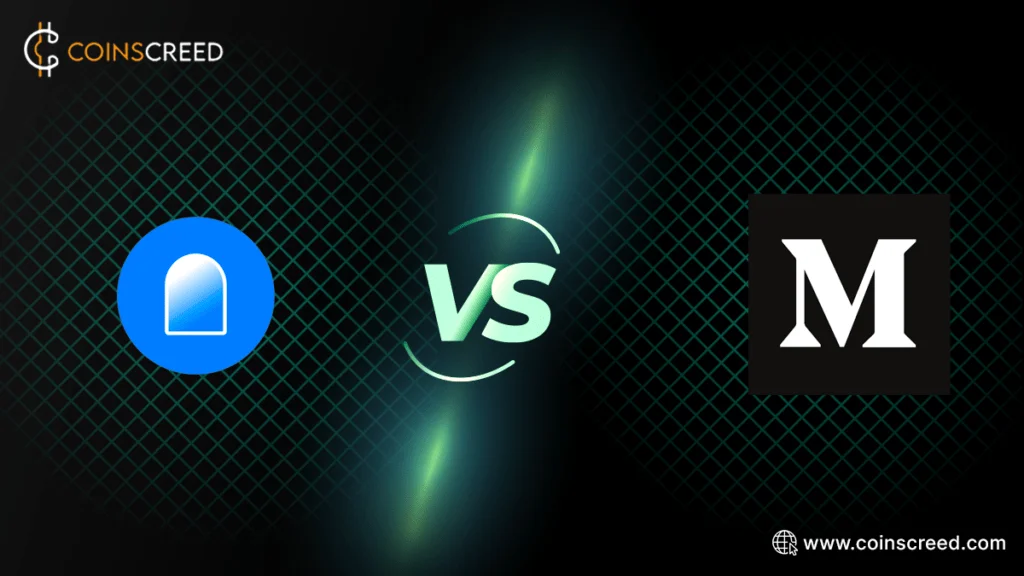
As a decentralized and crypto-based platform built on the Ethereum blockchain, writers can crowdfund their ideas by selling them as NFTs.
When Mirror.xyz was started, authors were required to receive the platform’s native $Write token, which could be obtained by participating in the platform’s “$Write Race,” a weekly contest that helps select users’ membership. Once users had the token, they could begin crowdfunding their projects and rallying support from backers. However, in late 2021, Mirror’s team revealed that the platform would be open to everyone with an Ethereum address and wallet.
Storj vs. Google Cloud Storage
Storj is an open-source decentralized cloud storage platform where anyone can sell their extra hard drive space. It stores files on a peer-to-peer network using encryption, file sharing, and a blockchain-based hash table. The goal is to make cloud file storage faster, cheaper, and more private.
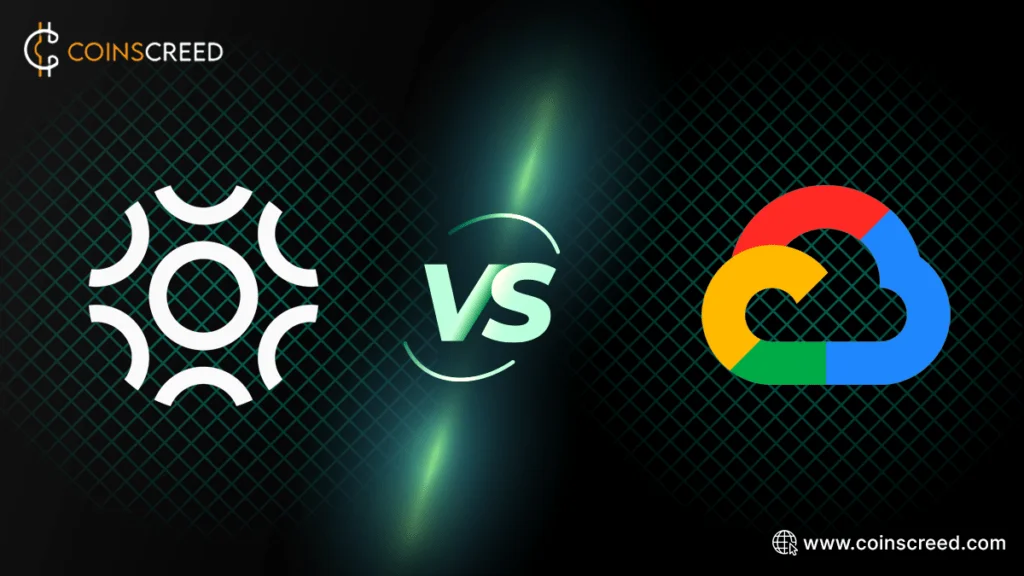
It provides customers with safe data storage while also assuring fault tolerance and redundancy. Storj uses blockchain technology to transform the benefits of cloud storage, albeit on a distributed network. The most notable advantage of Storj is the ability to upload and download files at any time.
Another significant feature of Storj as a web3 application is the Storj coin, which supports the Storj decentralized storage infrastructure.
Odysee vs. YouTube
Odysee, a YouTube-like video hosting platform, will be introduced at the end of 2020, following a beta version that went online in September.
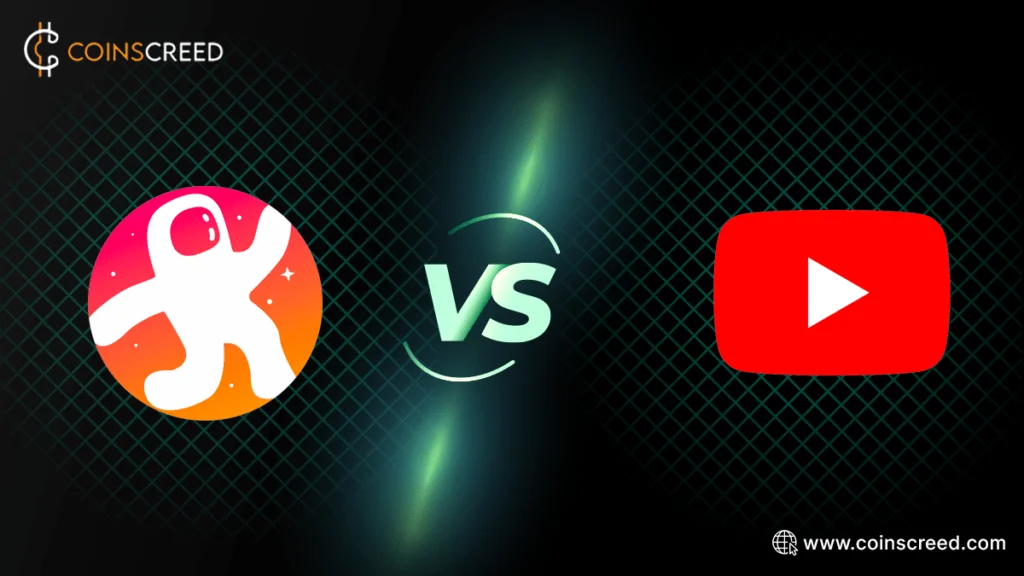
The user interface of Odysee is nearly identical to YouTube’s. Users can upload videos to their channels, viewers can express their approval by liking videos and leaving comments, and the homepage highlights prominent topic categories of videos trending on the site.
It was built by the same team that invented LBRY, a blockchain protocol. While YouTube keeps video uploads on its centralized servers, Odysee operates as a peer-to-peer data exchange disseminated throughout a network in order to bypass centralized servers.
While YouTube creators generally rely on advertising revenue based on the number of views, Odysee provides three methods for monetization. The first is earnings per view, in which users with a recognized account receive rewards in the form of LBRY Credits (LBC). The second type of monetization is through viewer tips or direct donations. Odysee’s third avenue for monetization is site/app promotions.
Brave browser vs Chrome browser
Web3 browsers, such as Brave, enable users to access DApps, integrate cryptocurrencies, and surf the decentralized web with enhanced privacy and security.
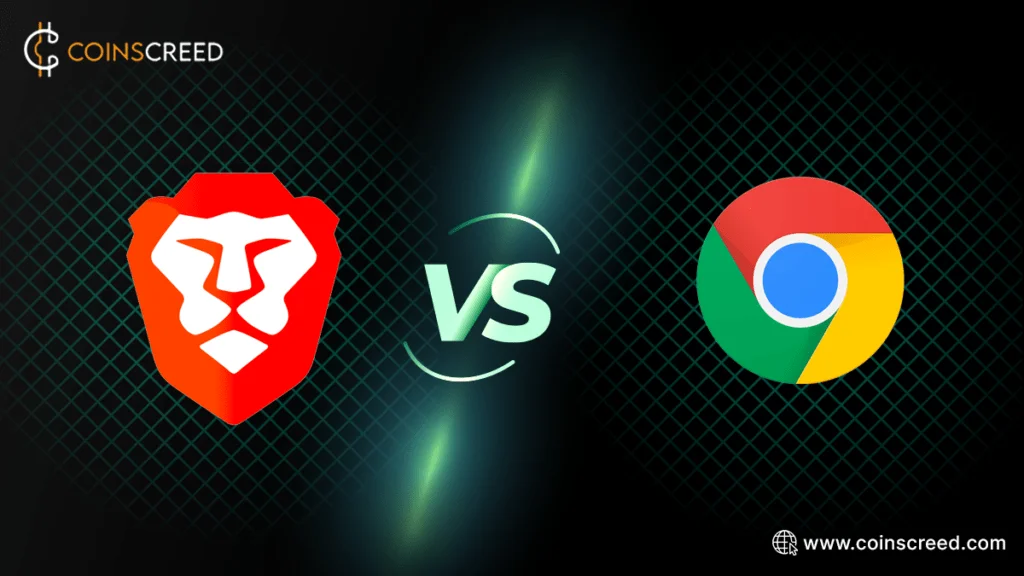
Google Chrome and Brave are both Chromium-based browsers. However, Brave includes native tracking protection, which allows you to block trackers and advertisements without the need for a third-party program.
To make the browser’s tracking even more aggressive, you can toggle numerous advanced features in Brave. This move, however, may cause some of the websites you visit to malfunction.
For even greater anonymity, Brave includes a built-in VPN and firewall service, eliminating the need for separate software.
Presearche vs. Google
Presearche is a community-powered, decentralized search engine. It is attempting to compete with Google by developing a search engine that does not collect personal information from users.

To accomplish this, the search engine relies on volunteer-run computers known as “nodes” to aggregate search results for each query. The nodes are subsequently compensated with a blockchain-based token for processing the search results.
The end result is a decentralized, community-run search engine that is also meant to remove the user’s private information with each search request.
Furthermore, it promotes its improved anti-abuse system and enhanced search results experience as advantages over existing centralized search engines like Google.
Braintrust vs. Upwork
Braintrust is the world’s first blockchain-based decentralized talent network. Technical freelancers on the marketplace have the opportunity to work with companies such as Nestle, Porsche, Atlassian, Goldman Sachs, and Nike.
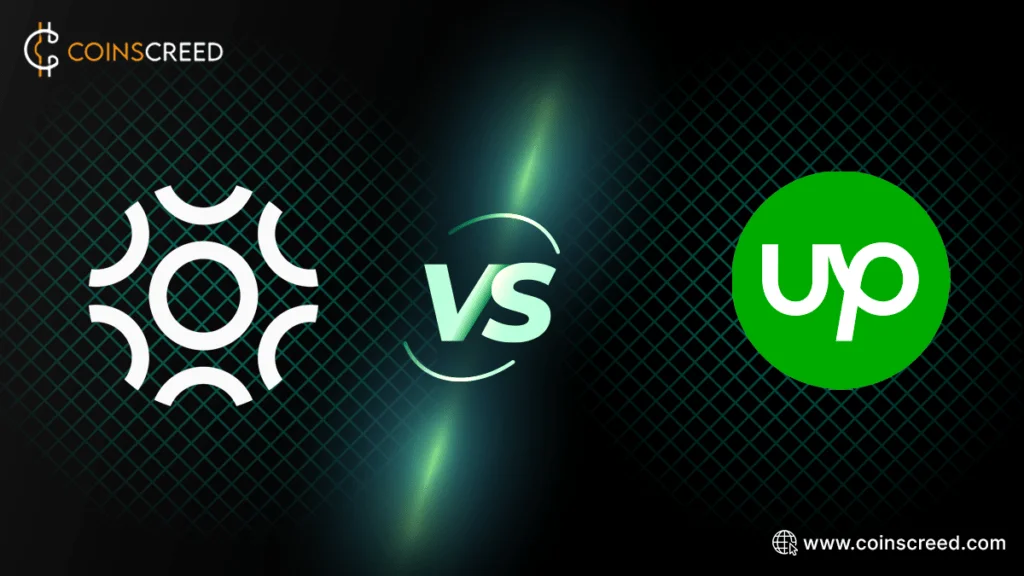
Unlike most other freelancer platforms, Braintrust does not take a percentage of freelancers’ contracts. Instead, the network charges companies a platform fee of 10% of the contract value. Transferwise charges freelancers a $5 withdrawal fee plus any associated currency conversion expenses.
Braintrust provides opportunities for high-paying assignments from top clients while providing you control over your career and the network you rely on.
It does this by being the first decentralized talent network, employing a crypto token, BTRST, to award ownership and governance over the network to people who do business on it and creating a system of aligned incentives.
SOLA vs. Facebook
Sola is a decentralized social platform powered by distributed nodes, IPFS, and the Ethereum blockchain.
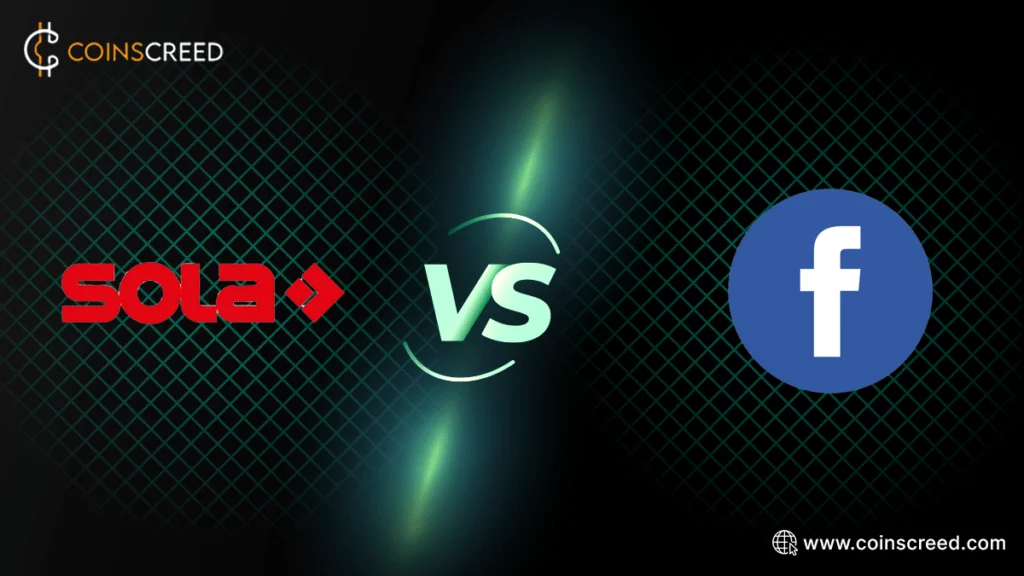
Instead of simply becoming another social media platform, Sola wishes to create an environment in which all users are equal and have a greater voice than in traditional social media, where influencers and advertisers have an unfair monopoly.
When you open the Sola app, you’ll see visuals or “cards” of content instead of the traditional Facebook or Twitter feed style. You then have two choices: a) skip the information or b) endorse it.
Content that is endorsed will be visible to more users; thus, there is no need for a share or likes system in Sola to promote content inside the platform.
The Sola platform was developed on the foundations of Plague (also known as Plag), a social media platform established by the same business in 2014.
Sola combines social networks using blockchain and artificial intelligence. The web3 social media platform uses AI algorithms to distribute relevant information to users based on their interests.
It focuses on creating a social media network where everyone has equal freedom of expression without giving advertising, influencers, and large corporations a monopoly. Neutral AI, Sola’s powerful neural learning network, aids in the optimization of the content-sharing process. Users can also investigate monetization opportunities for sharing and creating content.
Audius vs. Spotify
Audius is an artist-controlled and community-owned music streaming network that aims to allow any user to freely distribute, monetize, and play audio.
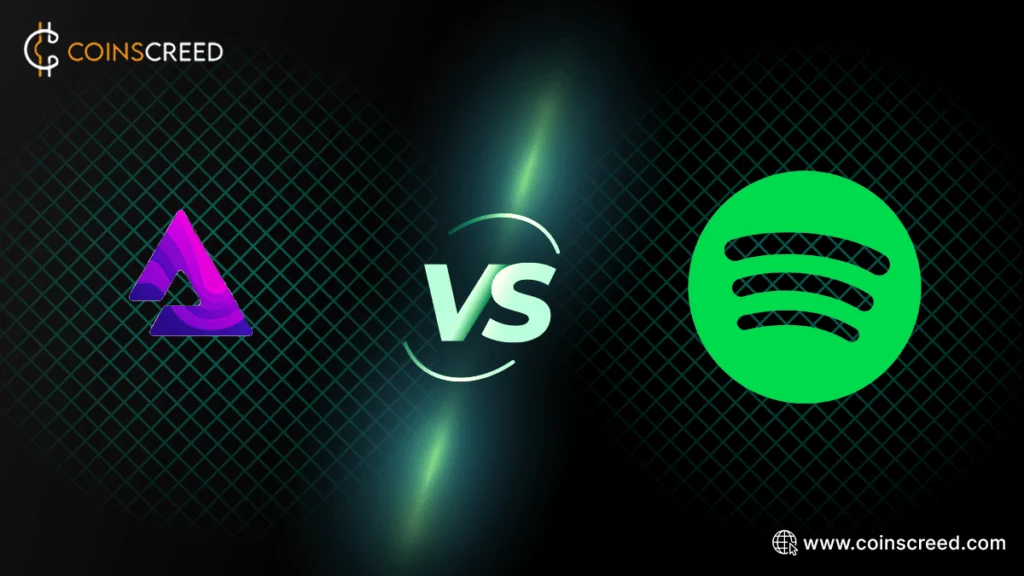
This music streaming platform aims to be the blockchain equivalent of Spotify or SoundCloud. The crypto-powered music app aspires to decentralize and democratize the music industry by giving musicians more money and control.
Audius positions itself as a future music protocol, connecting artists and listeners directly while eliminating intermediaries such as record labels and even platforms such as Spotify that take a large part of music sales.
90% of sales money goes to artists, with the remaining 10% going to network node operators. Notably, the platform does not take a portion of the money.
The music app allows musicians to retain sole ownership of their music by establishing immutable timestamps of their content, which are safeguarded by a network of decentralized node operators.
On Audius, any music composer can post and monetize content. There’s no need to be signed to a label or have a large fan base to start sharing your music on your own terms. The program also pays artists with Audio tokens for milestones such as being in the top five weekly popular tracks and top five trending playlists.
ENS vs. GoDaddy
ENS, like GoDaddy, is a domain registrar and web hosting firm, except it is decentralized and built on the blockchain.
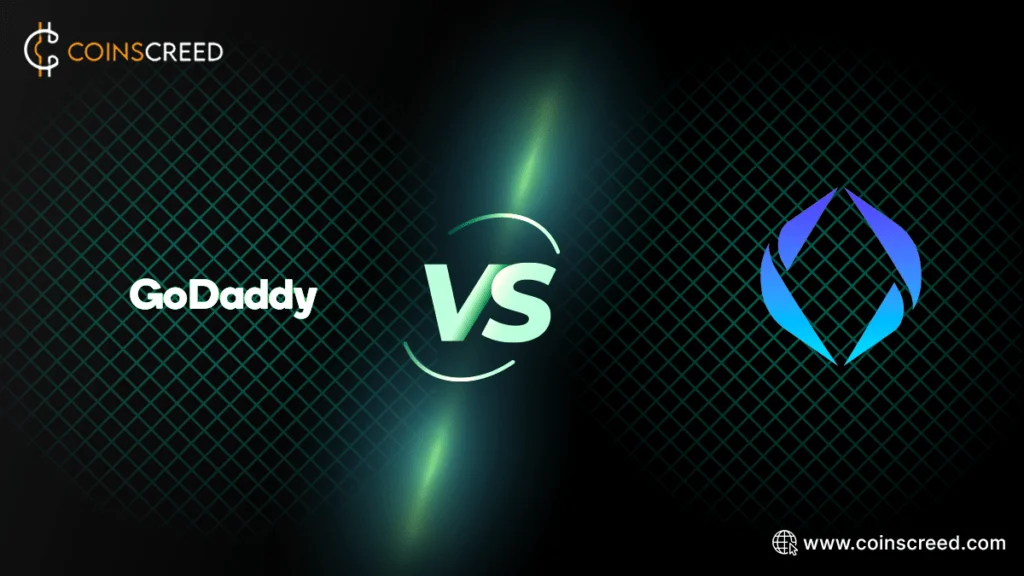
The ENS service is analogous to the internet’s Domain Name System, which allows users to access websites using simple domain names rather than typing the precise IP address of each website they desire to view.
Because ENS domains are powered by decentralized smart contracts, they provide higher censorship resistance and anonymity than DNS domains on the internet.
ENS domains are NFTs that allow holders to link a ‘.eth’ domain name to bitcoin wallet addresses. This allows users to request payments to a simple ‘.eth’ address that is easily read by humans, rather than exchanging a 64-character alphanumeric code.
Filecoin vs. AWS S3
Filecoin is based on the Inter-Planetary File System (IPFS) and is utilized to provide a data storage and retrieval technique in which users essentially rent providers’ unused storage drive space.
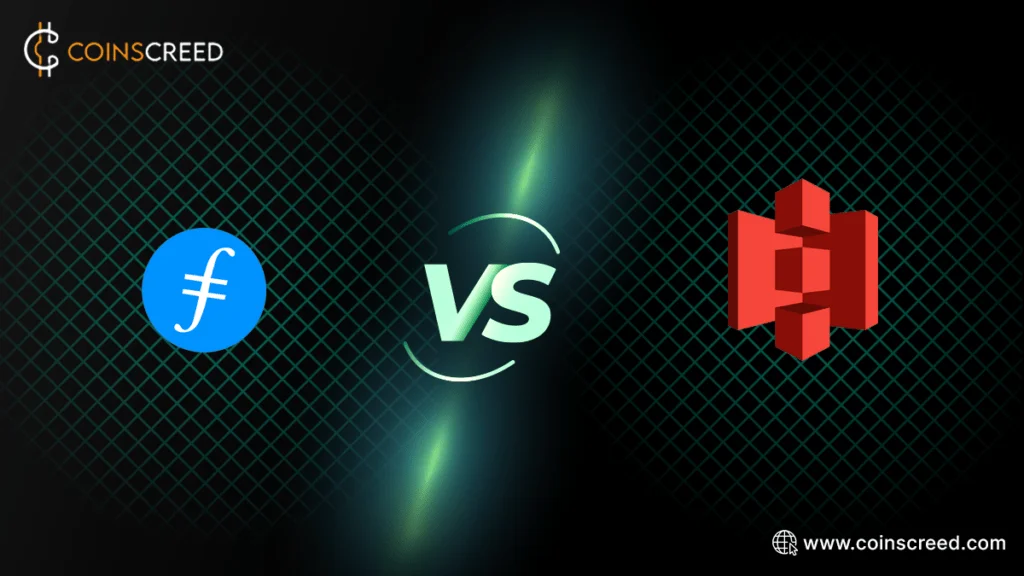
It combines several aspects of previous file storage and delivery systems. What distinguishes Filecoin is that it operates on an open, peer-to-peer network while also offering economic incentives and guarantees that files are saved correctly.
FileCoin is a decentralized storage network that is frequently less expensive, faster, and more secure than centralized cloud data storage competitors such as Amazon AWS, Microsoft Azure, and Google Cloud.
Secretum vs. WhatsApp
Secretum is the world’s first and only decentralized, encrypted messaging software built on the Solana Blockchain. It provides users with a secure, hassle-free, and direct messaging platform built on important technological advances.
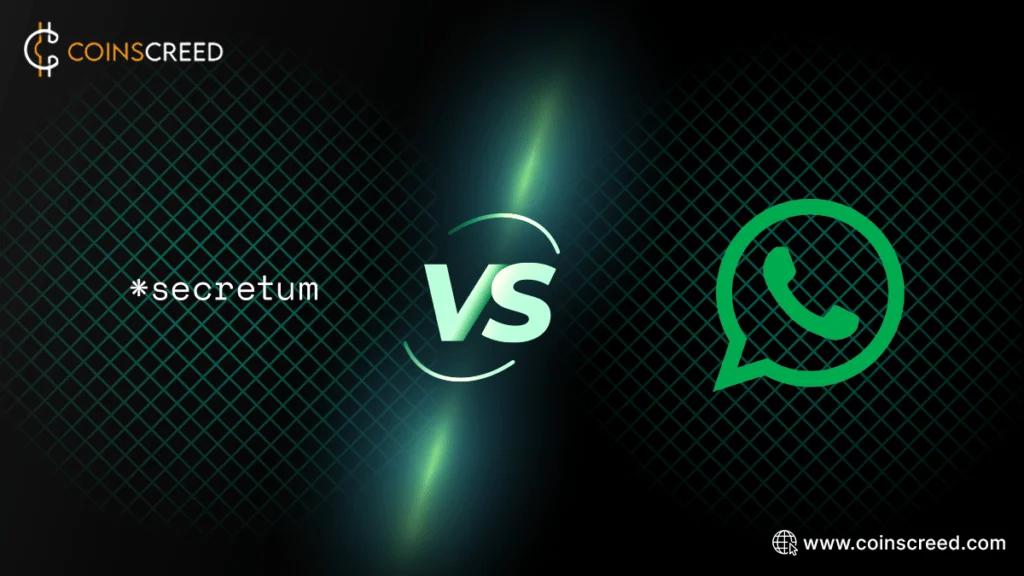
Secretum enables users to trade fungible and non-fungible crypto assets in a cost-effective manner, circumventing established exchanges.
It allows for a completely safe and anonymous sign-up with only a crypto wallet address required. There is no need for names, IDs, or phone numbers (like WhatsApp).
The app’s messaging history and files are stored on anonymous, independent, and non-connected nodes. This eliminates all points of failure and makes the network more secure as it grows and increases its nodes.
The platform also allows users to gain rewards for using the applications, creating content, and paying for additional services using its native currency, the SER token. Thus, the Secretum app essentially establishes a global platform for all crypto wallet owners to come in and speak with one another while doing their day-to-day trades.
Steemit vs. Reddit
Steemit is a blockchain-based blogging and social media platform. Users can earn STEEM by publishing and curating content.
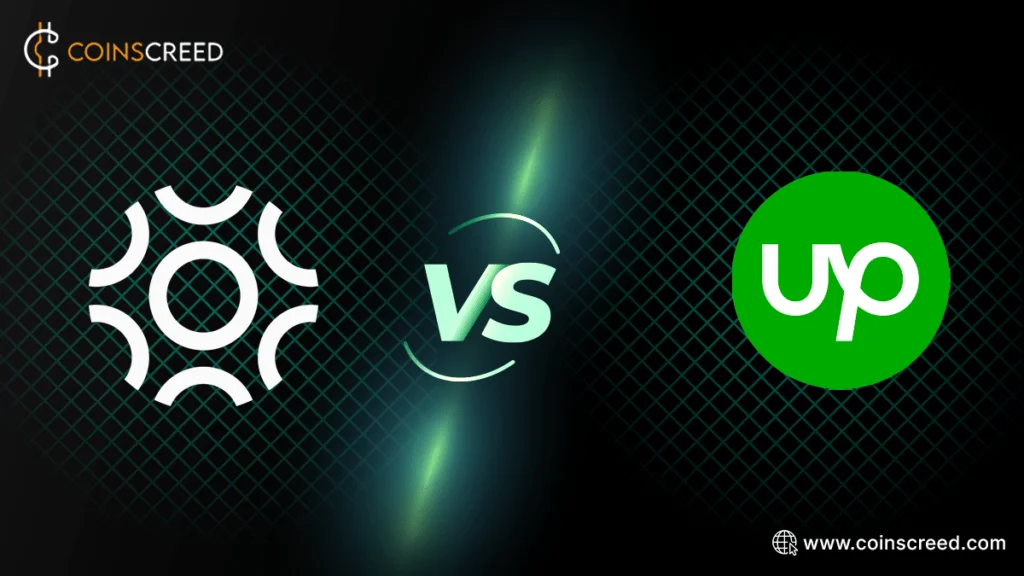
It functions similarly to a decentralized social blogging website and is more like the Web3 equivalent of Reddit. The most notable feature of Steemit, as one of the web3 app examples, would be the monetization of user material.
Steemit users can be paid for their material based on community voting. Steemit, which has over 1.7 million registered accounts, was built on a private blockchain known as Steem and adheres to Web3 principles in its essential operations.
Ethlance vs. Fiverr
Ethlance is a job market platform built exclusively on the Ethereum blockchain and accepting only bitcoin payments.
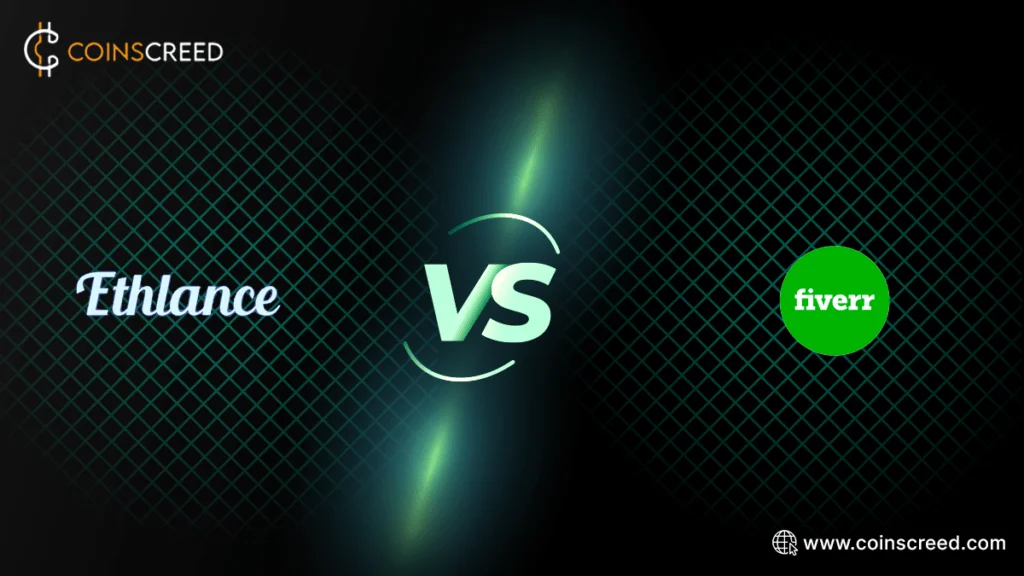
It is a freelancing marketplace that allows users to build an employer or employee profile, publish and apply for open positions, rank and provide comments for employers and employees, and send and receive bills.
Ethlance is decentralized and does not charge any service fees; instead, users pay only the cost of gas to broadcast their profiles, postings, messages, feedback, and invoices to the Ethereum network.
As a decentralized talent marketplace, Ethlance eliminates traditional barriers between freelancers and businesses. Employers could save money on recruiting talent, while freelancers could gain more control over their work.
Conclusion
Web3 applications are a creative spin on traditional applications with additional value enhancements. Web3 apps are focused on decentralized communication and interaction between users and applications.
There are some Web3 applications that can be used as alternatives to Web2 applications. They provide improved functionality through decentralization, security, ease of use, and transparency.
